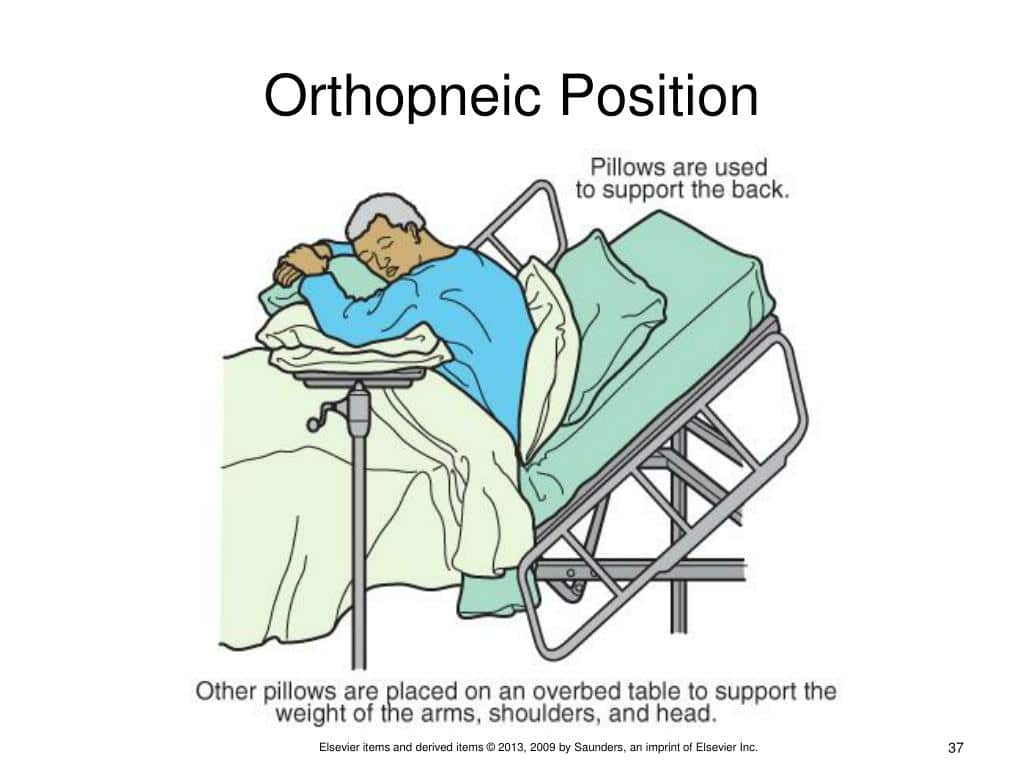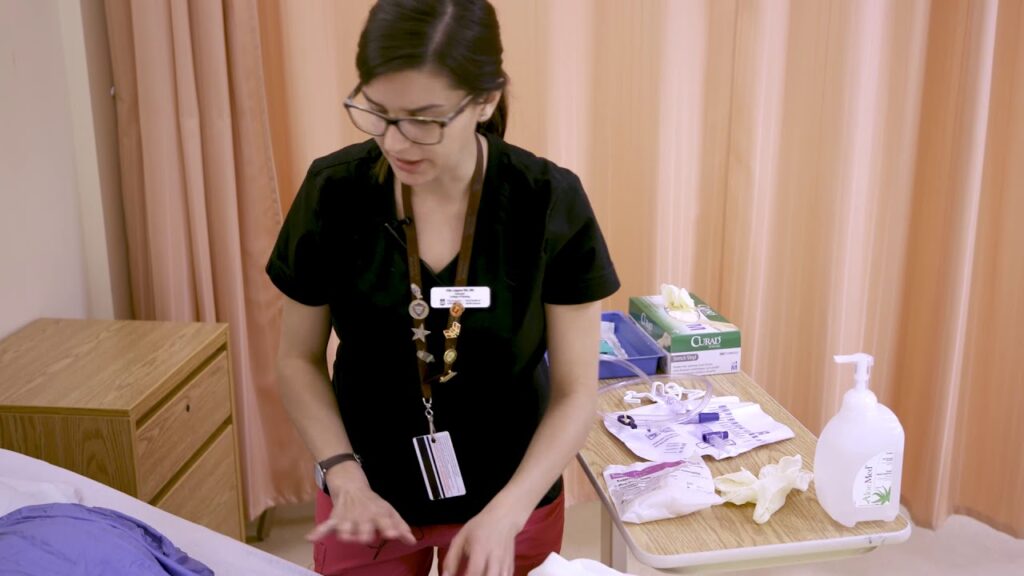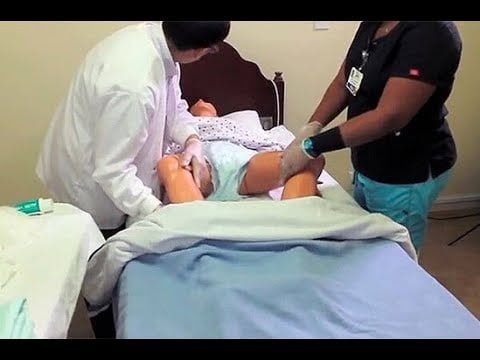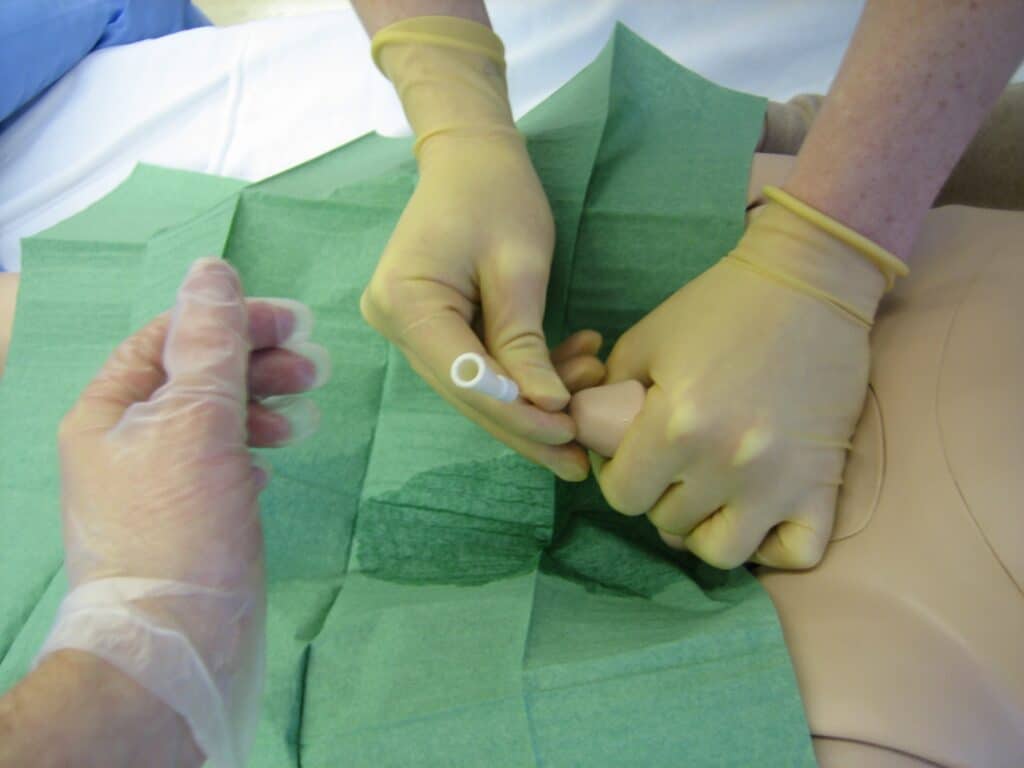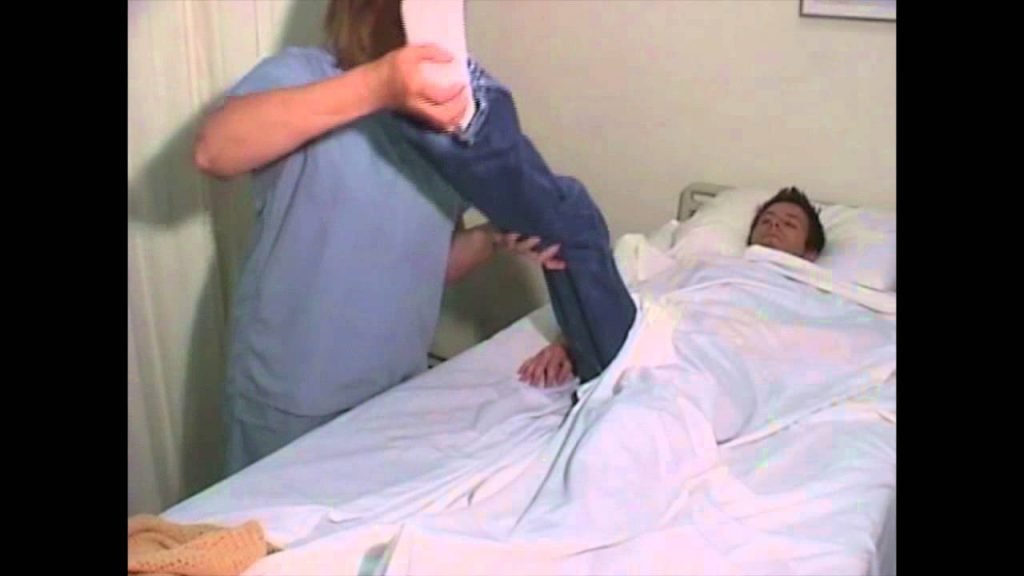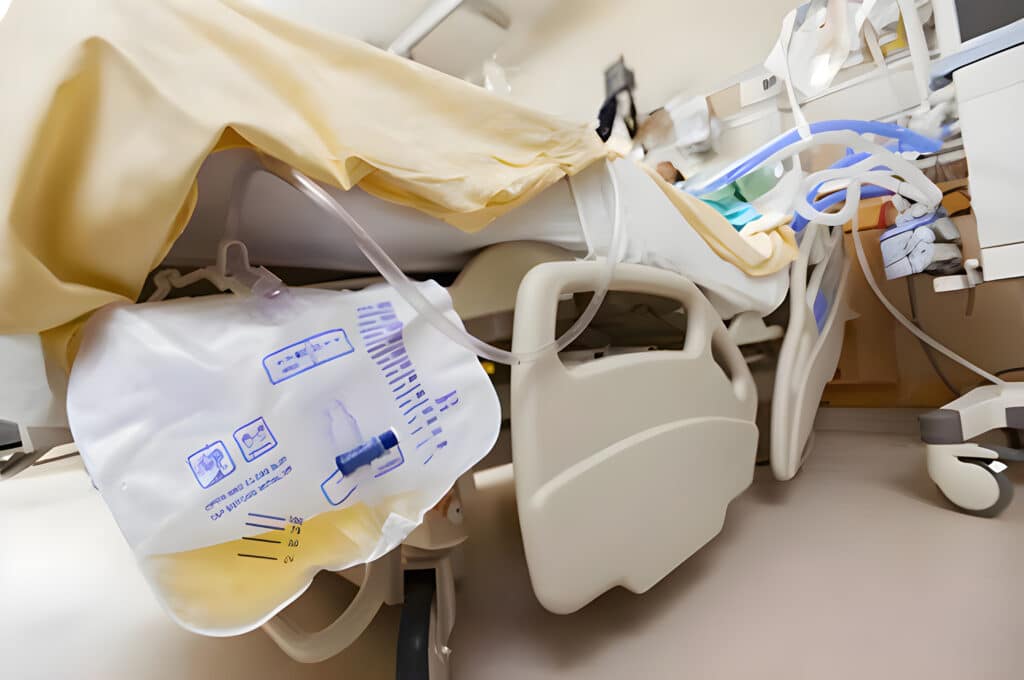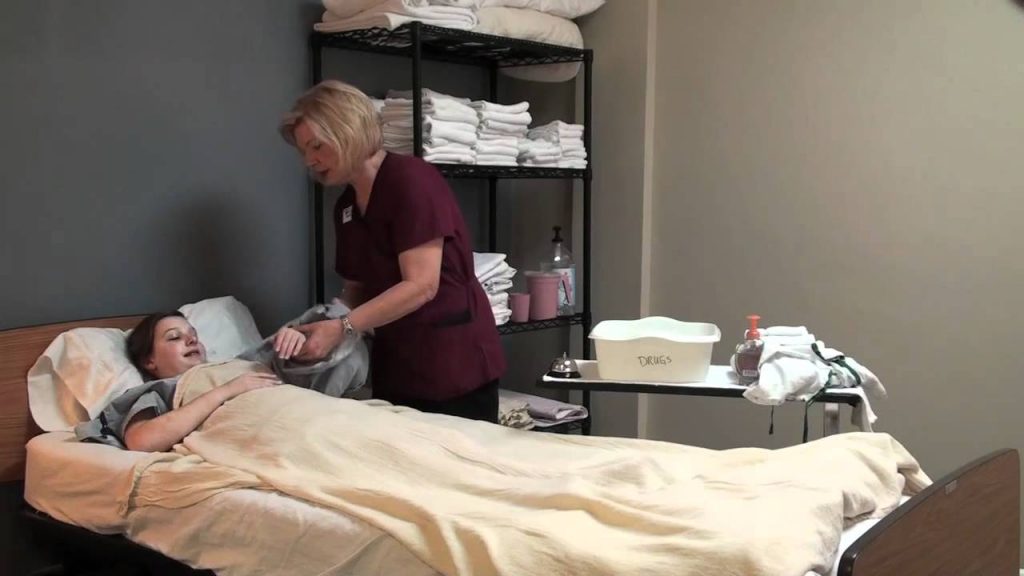Written by Amanda R. McDaniel, MS, BSN, RN
Amanda is a BSN/RN with a MS in Physiology and a BA in English. She worked as a medical writer in the pharmaceutical industry for 11 years before pursuing a career in nursing. She now works as a nurse on a NeuroTelemetry unit and continues to write and edit on a freelance basis. Amanda’s LinkedIn
Patients with respiratory illnesses such as chronic obstructive pulmonary disease (COPD) find ways to help themselves breathe more easily. This can include sleeping with extra pillows to keep them propped up or leaning forward to ease the work of breathing. The orthopneic position is one forward-leaning position used to help patients breathe comfortably when they are having difficulty.
Achieving Orthopneic Position
- Start with the patient in Fowler’s position with the body in proper alignment.
- Place the bedside table over the patient’s lap.
- Lay one to two pillows on the table. Place the patient’s arms on the pillows and have the patient lean forward onto their arms.
- This position can also be achieved if the patient is sitting in a chair by following steps two and three.
- Ask the patient if they are comfortable. Make adjustments as necessary.
- Document the position per institutional or unit policy. Report any difficulty getting the patient into position or maintaining position to the nurse per policy.
References
Activity and mobility. (2014). In A. G. Perry, P. A. Potter, and W. R. Ostendorf (Eds), Clinical nursing skills & techniques (8th ed., pp. 210-213). St. Louis, MO: Mosby Elsevier.
S. A. Sorrentino, & L. N. Remmert. (2012). Oxygen needs. In Mosby’s textbook for nursing assistants (8th ed., pp 620). St. Louis, MO: Elsevier Mosby.

